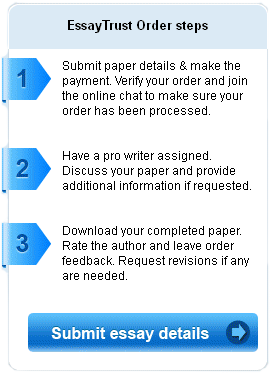Lab Report Writing Guided by Pros
EssayTrust.com is your personal lab report help provider. We are known among the students from all over the world as the most reliable and attentive service. On this page we have located a small guide for your lab report writing to steer your thoughts in the right direction. You are free to refer to this guideline or just contact us and ask our writing team for some assistance.
How to write a lab report
Your lab report shows that you can put your knowledge into practice and understand the way the experiment goes. Naturally, understanding of what is happening in the experiment and explaining your scientific findings in a clear manner is a really meaningful part of doing it. Lab report consists of three main parts: pre-, in- and post-lab. This guideline includes some basic advice on how to do a lab report that might help you go through all lab report challenges. You are also recommended to find a lab report example in the web to see what formatting and structuring it requires.


Pre-lab report
Start your project with a brief discussion of the issue you are going to investigate. Make it short: 4-6 sentences will be enough. Try to write this paragraph in your own words instead of paraphrasing lab manual. We suggest the following structure for a formal lab report:
- Background information. Describe why this experiment is worth doing and what similar experiments have been already done before.
- Aim. In the next sentence, explain what exactly you are going to do and what you suggest to find. Here you should include the techniques and materials. For instance, list the chemicals if you are doing a chemistry lab report or other materials if you are doing a biology lab report or physics lab report.
The process chart
The second part should explain the reader the process you are going to hold in the laboratory. There are two key aspects of writing a chart:
- Read the manual carefully and make sure that you understand the procedure.
- Rewrite the procedure in the format of a chart. Do not copy, but make a careful rewrite in simple words to think carefully about what you are going to do.

In-lab report
- Data gathering. Be sure to write down the data immediately in your lab notebook. Write down everything you think is important.
- Observations. Writing a lab report, record everything your eyes see and your nose smells. If your chemicals change color, odor, react, evolve a gas or something – write down your observations. In case if the results are unexpected or you do not have any – go back and try to find where the error is.
Post-lab report
- Recopying data. Organize your in-lab data in a readable form of a table or any other neat format.
- Calculations. Include the formulas you used and show all the work you have done by including all necessary calculations.
- Conclusions. Conclusion should look like an introduction. The only difference is that introduction describes what you are going to do while conclusion states what you have already done.
- Your thoughts. Comment the results and describe your thoughts about them.
Professional lab report help
So, how to write a lab report and get a good grade? How to avoid mistakes and errors that can spoil the experiment and make you start all over again? The answer is simple: just contact our writing agency, provide your lab report instructions and we will do it for you! Hurry up and place your order with us!
 |
 |
|
 |
|
 |
 |
 |
 |
Save Reset Clear Close


